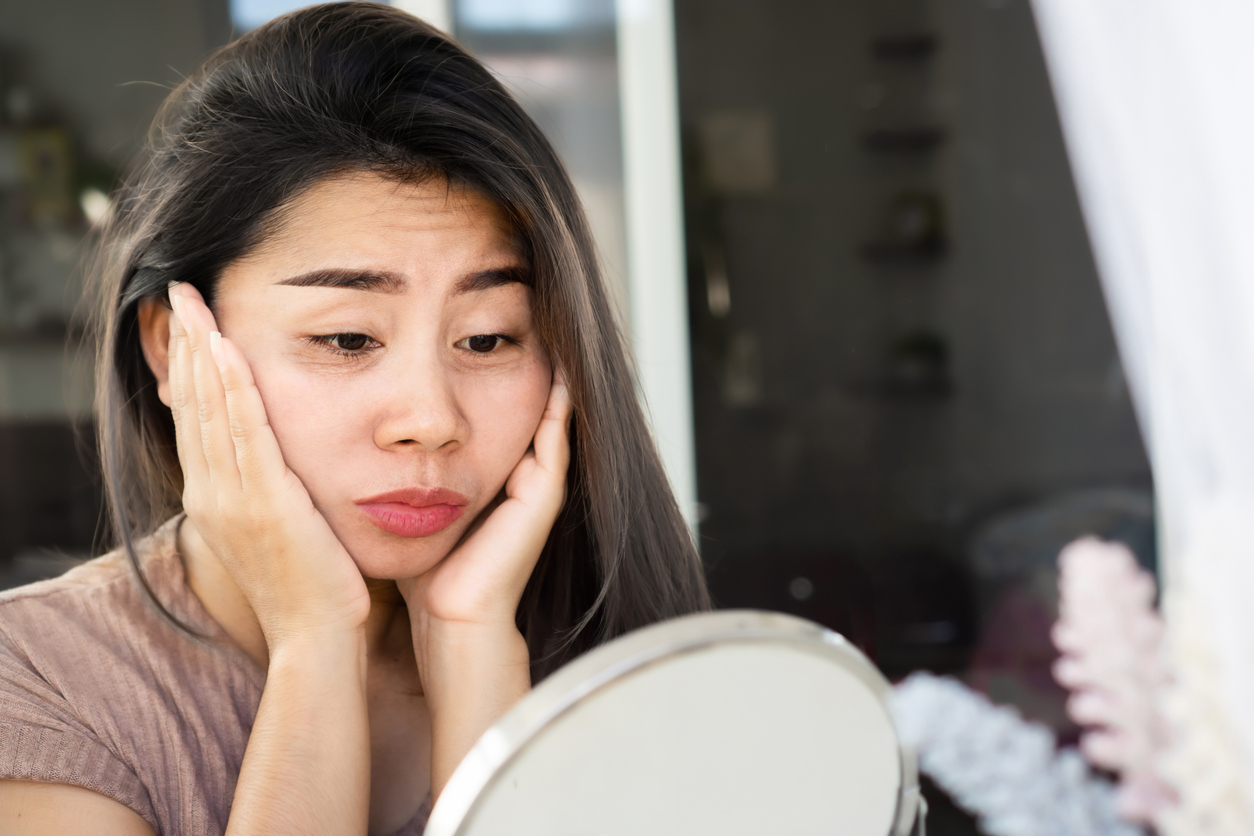It can be difficult to notice dark under-eye circles while they develop. But one day, you may look in the mirror and realize prominent dark circles have formed under your eyes. Dark circles can appear for a variety of reasons, such as illness, aging, and even genetic predisposition.
One way to tell whether your under-eye circles result from a genetic trait is the length of time you have had them. If dark circles have been prominent from an early age, there is a good chance they are genetic. However, specific symptoms of one’s dark circles¸—especially the color—may suggest other sources. Our eyelid surgery center in the Inland Empire explains the condition and provides treatment options.
What Causes Dark Circles?
Many different conditions can lead to discoloration in the skin beneath the eyes. Beyond heredity, there are many potential causes of dark circles around the eyes. Even if your under-eye troubles are hereditary, they will have similar causes as those unrelated to genetic predisposition, such as:
- Sagging skin, which creates a swollen appearance where the skin collects under the eyes
- Decreased collagen production and skin elasticity, which lead to increased visibility of blood vessels beneath the skin and create the effect of pigmentation
- Allergic reactions that cause blood vessels under the eyes to swell and pool with blood
- Fluid retention under the eyes, typically caused by an intake of excess salty foods
- Skin dehydration, which amplifies the visual effects of poor sleep and an unbalanced diet
All of these factors and more can contribute to the development of dark circles below the eyes.
Genetic Factors for Dark Circles
You might think that your under-eye circles have appeared out of nowhere. This is a common complaint from our patients who are looking to effectively treat dark circles. Due to our emerging advancements in both diagnosis and treatment, we offer a comprehensive plan to reduce your blemishes and restore a youthful look.
Dark circles usually develop due to inflammation, loose skin, and clustered blood vessels under the eye. Some people have a genetic predisposition towards these symptoms. It can come from a gene or an inherited condition that makes dark circles a problem from birth. It might also be a defect that does not show up until later in life. Either way, a specific diagnosis can give you more clarity about your status and help you best treat it.
Additional Dark Circle Symptoms
Since it can be difficult to immediately narrow down the source of your dark circles, it is a good idea to consider all types of factors. There are many non-hereditary causes of dark circles as well. You might find that you relate more closely to one of these issues:
Aging
Aging is the most common cause of dark circles and bags under your eyes. As you age, your skin produces less collagen and becomes more translucent, which makes it easier to see the blood vessels beneath the skin. Additionally, your face is usually the first area to start showing physical signs of aging.
Allergies
Seasonal allergies can make you look and feel ill. Allergic reactions can clog your sinuses, inflame your tear ducts, and make your eyes constantly itch. They also lead to swelling in the blood vessels below the eyes and allow blood to pool in that area. The enlarged blood vessels then create the effect of hyperpigmentation under the eyes.
Stress
You might not be able to completely avoid stress, but there are steps you can take to reduce its negative impact on your body. Stress is often referred to as a “silent killer,” as it can create any number of severe physical reactions when one becomes overly stressed. Stress also leads to fatigue, a common cause of under-eye bags.
Dark Circle Treatments at InFocus
There are a wide variety of causes and symptoms that can contribute to your dark under-eye circles. No matter where they come from, though, they can be treated at Inland Empire’s leading eyelid surgery center. Some of their popular dark circle treatment options include dermal fillers and skin resurfacing, which can add volume to your face and replenish your skin. This non-surgical treatment covers mild to moderate dark circles for up to a year.
More severe dark circles may require a more intensive treatment option. We offer lower blepharoplasty, which corrects blemishes, dark spots, and sagging skin around the lower eyelids. It is a great way to enjoy youthful results for many years to come. Get in touch with us today to find out which option is best suited for you.


